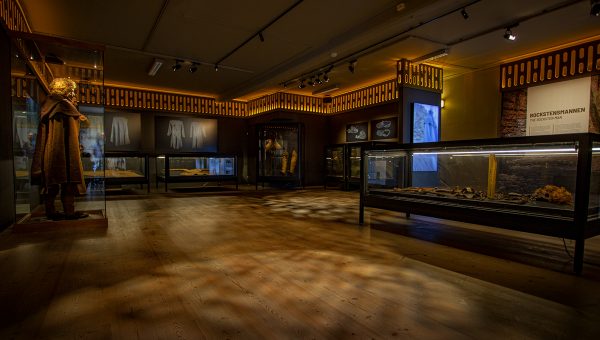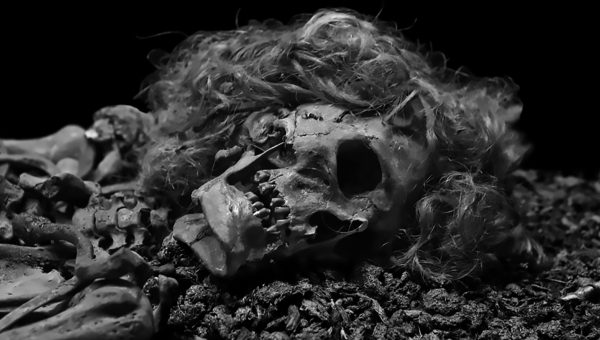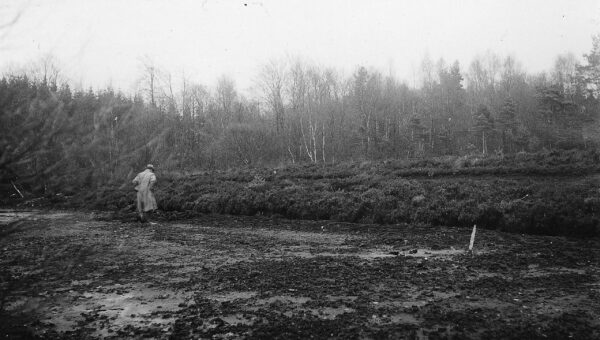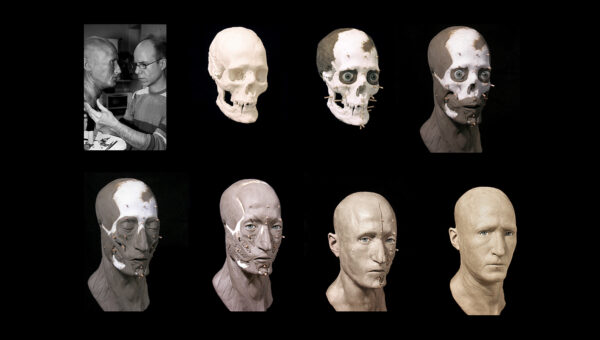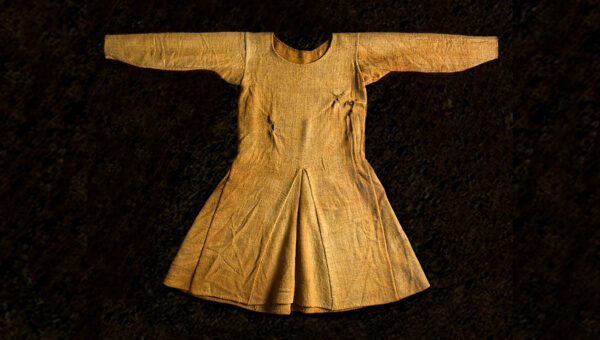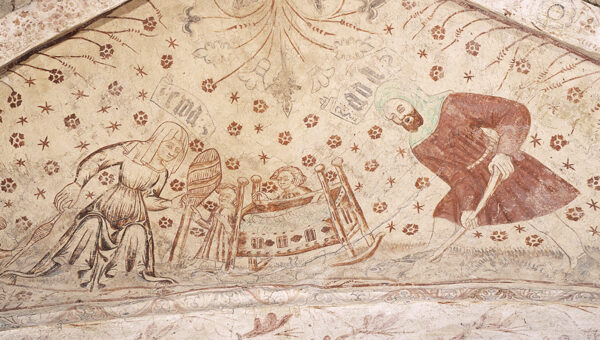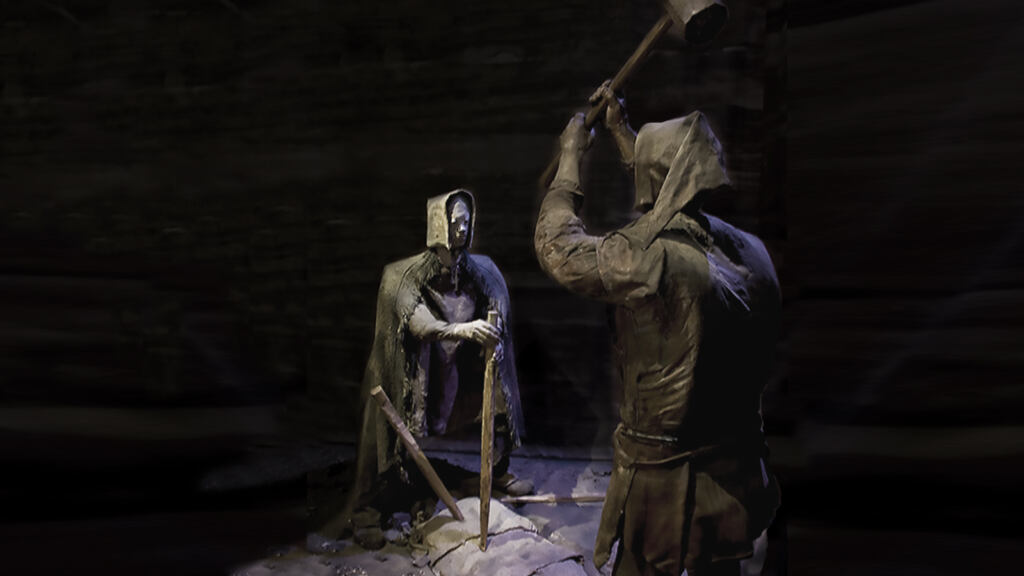
Preventing the Bocksten Man from becoming a ghost
The Bocksten Man’s body was impaled and anchored down in the bog with three wooden poles.
An oak pole driven through his heart was found fully preserved. Remnants of two birch poles were also found in the bog. The reason behind the practice of impaling poles through the body was to stop the deceased from ‘walking again’ i.e. becoming a ghost. The Bocksten Man was positioned with his face turned downwards. Placing the Bocksten Man face down in the ground shows that the intention was to degrade him even after death.
To find a reasonable cause for the death and impaling of the Bocksten Man, we can turn to the folktales. Impaling is described as a collective deed, done together by many people. There are some distinctive features present in the folktales. Those whose bodies were impaled were cruel and evil people, people who abused their power, those who practised witchcraft, so called self-murderers, criminals, or people who had been murdered.
Many bodies have been found in bogs in northwest Europe – so many that they are known as the bog people – with the majority dating to the Iron Age. Most of the finds were made during peat extraction work in the 19th and 20th centuries. The acids in the peat bogs (humic acids) have preserved the bodies, textiles, wood and leather for thousands of years. The humic acids have given a reddish brown tinge to the hair, bones, skin and textiles.
Many of these people were sacrificed to higher powers. Some of the best known have been found in Denmark. The Grauballe Man at Moesgaard Museum in Aarhus, and The Tollund Man at Silkeborg Museum.
The Bocksten Man is unusual, as he is one of the few bog people from Christian times, when in fact people were not sacrificed in bogs. However, belief in the power of the bog remained strong for hundreds of years, and perhaps that was why the location was chosen. One thing The Bocksten Man has in common with the other bog finds is the unique opportunity they provide us to come close to people from the past and step into the world as they saw it.

